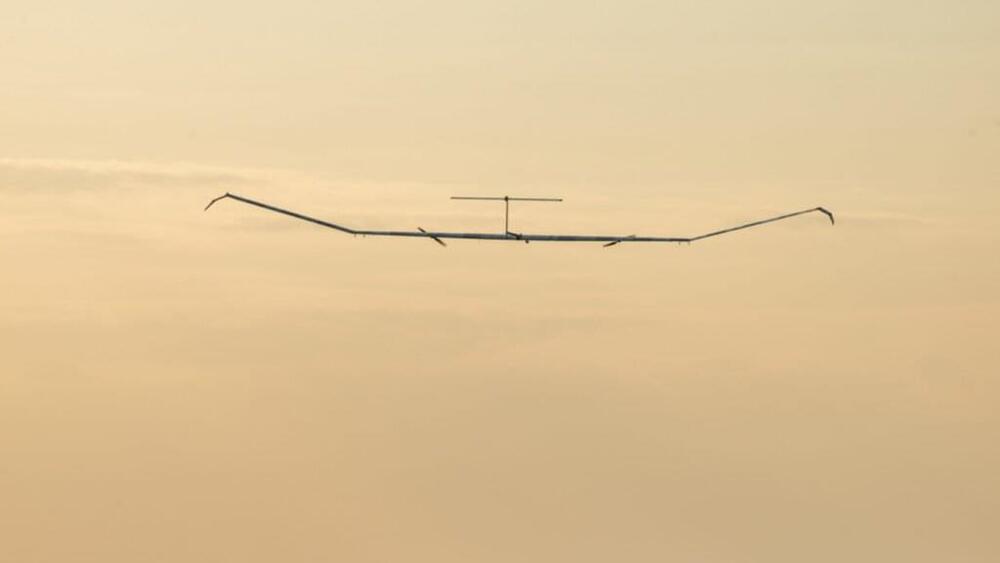War is changing. As drones replace snipers, we must consider the ethics of autonomous weapons making life or death decisions.
Category: drones – Page 46
Review: Hands-free flight with EEGSmart’s mind-controlled UDrone
Circa 2019 😀 What a fun mind controlled toy drone 😗
How much more fun could drones be if you got fiddly hand controllers out of the way and flew them with your mind? That’s the question EEGSmart poses with its UDrone mini-quad, which responds to brainwaves and head movements instead of thumbsticks. It’s not perfect, but it does give a glimpse of a mind-controlled future.
The Udrone itself is fairly unremarkable; it’s a lightweight mini-quadcopter with 2-inch props, nice plastic bumpers to save it from damage when it bumps into a wall, and an 8-megapixel, 1080p-capable camera. You can fly it using your mobile phone, in which case it works like most similar small quads, but also has some smarts under its belt with face tracking, subject tracking and gesture recognition.
It flies for six or seven minutes on a battery, which is about right for this size of thing. The camera isn’t anything to write home about, but it streams video back to your phone in real time as long as you’re within Wi-Fi range. So far, so ordinary.
MailOnline takes a look at technologies to remove plastic in oceans
These include aquatic drones that can be programmed to scoop up floating debris from the surface of rivers, and buggies that use artificial intelligence (AI) to search for and pick up litter for use on beaches.
Scientists are also hoping to scale up the use of magnetic nano-scale springs that hook on to microplastics and break them down.
MailOnline takes a closer a look at some of the technologies currently being used to reduce the man-made debris in our oceans, and those that are still in development.
Rwanda uses drones to deliver aid to farmers as road transportation proves challenging | WION
In an effort to increase livestock productivity, Rwanda is using drones to deliver aid to farmers. Road transportation is proving to be challenging.
#Rwanda #Aid #Farmers.
About Channel:
WION The World is One News, examines global issues with in-depth analysis. We provide much more than the news of the day. Our aim to empower people to explore their world. With our Global headquarters in New Delhi, we bring you news on the hour, by the hour. We deliver information that is not biased. We are journalists who are neutral to the core and non-partisan when it comes to the politics of the world. People are tired of biased reportage and we stand for a globalised united world. So for us the World is truly One.
Please keep discussions on this channel clean and respectful and refrain from using racist or sexist slurs as well as personal insults.
Check out our website: http://www.wionews.com.
A 165-Mile Drone Superhighway Will Soon Be Built in the UK
As organizations increasingly look to employ drones for everything from deliveries to pest control to surveillance, safety in the skies is becoming an issue that demands more attention. Regulations around drones and their flight vary widely between countries and regions, but to really start scaling the technology there will need to be more standardization in terms of who can fly where, how fast, how high, etc.
The UK is taking the lead on drone mobility, with an announcement this week of plans to build a 165-mile (265 kilometer) “drone superhighway.” Project Skyway is being led by Altitude Angel, a UK aerospace and unified traffic management company, and involves a consortium of other stakeholders, including British Telecommunications Group.
So how do you build a highway in the air? Picture a corridor of airspace running between various cities, with drones zooming back and forth in the designated segments of sky. The differentiating factor here is that rather than each drone using its own onboard sensors to navigate the route, they all tap into a ground-based network of sensors. This network brings together data from multiple sources to create a real-time, high-resolution moving map of the airspace and guides drones to their destinations.

Raspberry Pi Zero 2 W Lego-Powered Submarine Makes a Splash
BEC was kind enough to share a parts list of everything used to create this project. It’s operated primarily by a Raspberry Pi Zero 2 W, with most components housed neatly inside an acrylic cylinder. It’s driven by a drone propeller alongside a couple of Pololu 2,130 DRV8833 Dual H-bridge motor drivers. The sensors include both a pressure sensor and a distance sensor, while a Lego Rechargeable 9V Battery Box supplies the power with the assistance of a Pololu 2,123 S7V8F5 5V voltage regulator.
The Raspberry Pi runs Raspberry Pi OS, while the code used to operate the submarine functions is handled using a custom Python script. BEC explains that Thonny was used to run the Python code, which is open-source and available for anyone to explore.
If you want to recreate this Raspberry Pi project for yourself or make something similar, check out the full blog post shared on the official Brick Experiment Channel blog. We also implore you to check out the video shared on YouTube for a demo of the submarine in action.
DJI releases new firmware update for Phantom 4 Multispectral drone
Designed for precision agriculture and environmental management use cases, the P4 Multispectral drone combines data from six separate sensors to measure the health of crops. It can be used to monitor everything from individual plants to entire fields, as well as weeds, insects, and a variety of soil conditions.
The P4 Multispectral drone is compatible with standard industry workflows including flight programming, mapping, and analytics software from DJI and other leading providers. Using the DJI GS Pro application, you can create automated and repeatable missions including flight planning, mission execution, and flight data management. Data collected can be easily imported into DJI Terra or a suite of third-party software including Pix4D Mapper and DroneDeploy, for analysis and to generate additional vegetation index maps.
The drone was first announced in 2019.

Using artificial intelligence to train teams of robots to work together
When communication lines are open, individual agents such as robots or drones can work together to collaborate and complete a task. But what if they aren’t equipped with the right hardware or the signals are blocked, making communication impossible? University of Illinois Urbana-Champaign researchers started with this more difficult challenge. They developed a method to train multiple agents to work together using multi-agent reinforcement learning, a type of artificial intelligence.
“It’s easier when agents can talk to each other,” said Huy Tran, an aerospace engineer at Illinois. “But we wanted to do this in a way that’s decentralized, meaning that they don’t talk to each other. We also focused on situations where it’s not obvious what the different roles or jobs for the agents should be.”
Tran said this scenario is much more complex and a harder problem because it’s not clear what one agent should do versus another agent.